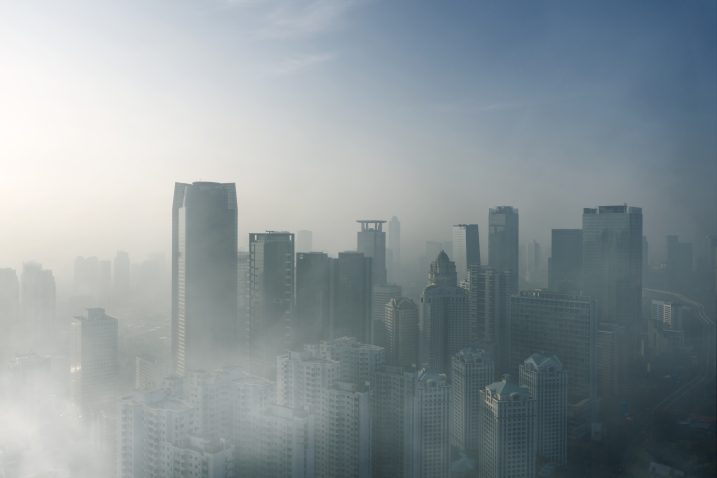Office Air Purification Helps Mitigate Pollution

Table of Contents
After struggling with the ramifications of the global coronavirus pandemic, which science has proven can be spread by airborne pathogens, most people realize the critical importance of good air quality. Just how poor is our air and what can we do to improve it?
Outdoor and indoor air quality
When we talk about air quality, we need to consider both outdoor and indoor air, as both can become polluted.
The World Health Organization (WHO) asserts that air pollution kills about seven million people worldwide every year. Even when air pollution isn’t fatal, just about everyone is affected. The WHO data shows that 9 out of 10 people breathe air with levels of pollutants that exceed WHO guideline limits.
Consider London, which has an abundance of traffic pollution. Transport for London reports the volume of road traffic in London makes it one of the most polluted locations in the UK. The Royal College of Physicians in its report- Every Breath We Take: the lifelong impact of air pollution (2016), identified one of the most vulnerable groups as people who work near busy roads. So whether you, or your employees, live or work – or do both – in London, you are being exposed to excessive outdoor air pollution.
Transport for London says the introduction of the Ultra Low Emission Zone, tougher Low Emission Zone standards, additional rapid charge points for electric vehicles across London, and new cycleways across London can all help improve outdoor air quality.
Just prior to the pandemic, the WHO held the First Global Conference on Air Pollution and Health (2018). They cited the dangers of poor air quality on workers: “Pollution of air at the workplace, being indoors in the work premises, or during work outdoors, is harmful to health and can be prevented.”
The report says sources of indoor air pollutants include a very wide range of chemical substances and preparations, aerosols, particles, and gases. They conclude that the levels of exposure to air pollutants inside the workplace can be much higher than outdoors.
Aside from these pollutants, the quality of air can be affected by simple human interaction. As the world’s experience with coronavirus illustrated, viruses and bacteria can be spread by airborne particles, so eliminating these pathogens has never been more important.
Just how harmful?
National Geographic’s “Pollutions Toll on the Body” (April 2020) reported on the impact of polluted air on the the six body systems: brain; nervous; cardiovascular; respiratory; endocrine; and renal.
They maintain that the ill effects of polluted air include changes in brain structure, higher risk of Alzheimer’s disease, neurodevelopmental disorders, chronic obstructive pulmonary disease, cardiovascular disease, kidney disease, respiratory disease, allergies, asthma, and cancer.
Polluted air comprises gases and particles. The report shows that polluted air is not always apparent because most airborne toxins are too small to see with the naked eye. Miniscule PM2.5 particles – 100 times thinner than a human hair – can pass into the bloodstream, causing the most harm. Other leading pollutants include PM10 respirable particulate matter, nitrogen dioxide, ozone and sulphur dioxide.

A solution to protect employees
Now that employers are welcoming staff back to the office, it’s the perfect time to examine how air quality can impact the health and productivity of the workforce, and what can be done to improve the work environment. The risk of people’s exposure to polluted air in the workplace can be controlled using established scientific methods.
Rensair, a patented air purification system used in Scandinavian hospitals for over a decade, has now made their portable units available to global businesses to help improve indoor air quality for everyone. Top independent laboratories including Eurofins, Norconsult and Oslo University Hospital have shown that Rensair is over 99.97% effective at destroying airborne impurities such as viruses and bacteria, including the coronavirus family.
Rensair uses a powerful fan that pulls air into an H13 HEPA filter, trapping bacteria and viruses and exposes them to a strong UVC light. This unique solution not only captures but also kills harmful particles, including bacteria, viruses and other pathogens.
Anything an employer can do to improve the health and safety of the workplace environment cultivates the trust and loyalty of employees. It also increases productivity, as clean air is a direct investment in everyone’s physical health.
There’s never been a better time to be proactive about indoor air quality.
